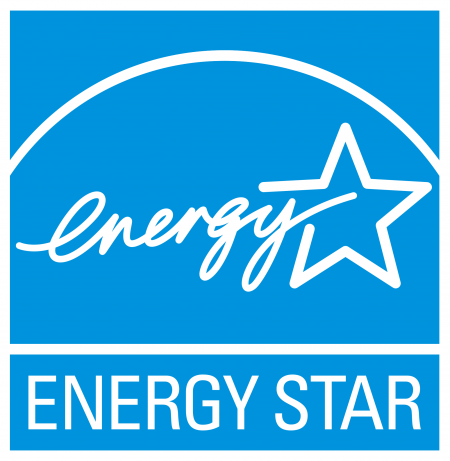This is a guest blog post by Ross Anderson at the Neighborhood Energy Connection.
Green building energy ratings and energy efficiency certifications are becoming increasingly popular—for good reason. Not only are energy efficient homes more comfortable, durable and less expensive to operate, but they’ve been proven to resell for a higher price in cities around the country.
But if you’re not an industry professional, the green building landscape can be a confusing alphabet soup of organizations and certifications. In today’s guest blog post, I’m hoping to demystify that landscape for the average prospective homebuyer by outlining some of the most common certifications in the Twin Cities market.
The Energy Code is the Baseline
Before we move on, we need to understand the importance of the International Energy Conservation Code (IECC).
The IECC is a set of minimum standards for a home’s energy system, including thresholds for insulation and mechanical equipment. The IECC is developed every three years by a national nonprofit. It’s not binding, but it’s used as the starting point for local energy codes by most states and municipalities, including Minnesota. The current Minnesota Energy Code is based on the 2012 IECC.
HERS Ratings
The HERS Index is the most common comprehensive energy efficiency measure used for new homes in Minnesota.
Ratings are calculated at the end of the construction process by a certified third-party specialist using diagnostic equipment and performance modeling software. The rating takes into account variables such as a home’s airtightness, level of insulation and type of heating and cooling system.
According to the index’s developer, the Residential Energy Services Network (RESNET), the typical U.S resale home has a HERS rating of 130, while a home built to the standards of the 2006 IECC has a rating of 100. A home with a HERS rating of 70 is 30% more efficient than a home with a score of 100, a score of 50 is 50% more efficient and so on.
Older homes are unlikely to have a HERS rating. Newer homes built since 2006 are more likely to have one. In 2014-15, for instance, 8,493 newly constructed Minnesota homes received a HERS rating.
ENERGY STAR®/ Zero Energy Ready
 ENERGY STAR is a certification program run by the U.S. Environmental Protection Agency. The name might be familiar to you from the ENERGY STAR rating found on many household appliances.
ENERGY STAR is a certification program run by the U.S. Environmental Protection Agency. The name might be familiar to you from the ENERGY STAR rating found on many household appliances.
The EPA estimates an ENERGY STAR home uses up to 30% less energy than a typical new home. Besides costing less to operate, ENERGY STAR homes have fewer issues with mold, air quality, and durability, due to comprehensive ventilation requirements.
If ENERGY STAR is the Prius of new home certifications–high performing and innovative, but not uncommon–the Department of Energy-certified Zero Energy Ready homes are the way-ahead-of-the-pack Tesla.
In addition to meeting ENERGY STAR standards, Zero Energy Ready Homes (formerly DOE Challenge Homes) must meet several other energy and environment-related criteria. These include receiving the EPA’s IndoorairPlus air quality certification and laying the necessary infrastructural groundwork to be “renewable ready.” The Department of Energy estimates that a Zero Energy Ready Home uses only 40-50% of the energy of a typical new home.
There are more than 67,000 ENERGY STAR single family homes and 14,000 Zero Energy Ready/Challenge Homes across the U.S.
Green Path
Green Path is a certification developed by the Twin Cities Builders Association and co-sponsored by Xcel Energy (full disclosure: I helped develop this certification).
Green Path emphasizes flexibility in meeting certification standards. The base measure is a HERS score and homes earn further points by choosing from a menu of point-earning compliance options in five different categories: Energy Efficiency, Indoor Air Quality, Resource Management, Water Management and Site/Development.
There are three types of Green Path-certified homes: Tested, Advanced, and Master. A Tested home has been inspected by a RESNET-certified rater. Advanced and Master must score lower than a 55 and 50 on the HERS index, respectively, and must earn elective points from the five aforementioned categories.
The Green Path is probably most well-known for being an important part of the annual Parade of Homes. There are a total of 7,000 Green Path tested homes in Minnesota. In the spring 2016 Parade, 70% of all participating homes were Green Path tested.
Energy Fit Homessm
So far, we’ve mainly discussed certifications that apply to newer homes. Together with our partner, the Center for Energy and Environment, the Neighborhood Energy Connection offers the Energy Fit Homes certificate. Energy Fit Homes rates homes on a scale of 1-100 based on their attic insulation, wall insulation, lighting, ventilation, windows, heating equipment and combustion safety.
More than 300 homes across the Twin Cities metro have been certified as Energy Fit.
How can I find out if a home has a certification?
HERS ratings and some of the other certifications we discussed are listed on the Northstar Multiple Listing Service. If you’re in the market for a new home, ask your real estate agent to add this field to your search results. After all, your monthly utility bills are the largest cost of homeownership after your mortgage. Here’s a press release with more information on that topic: MN/WI Buyers Can Now Find Energy Information when Home Shopping.
